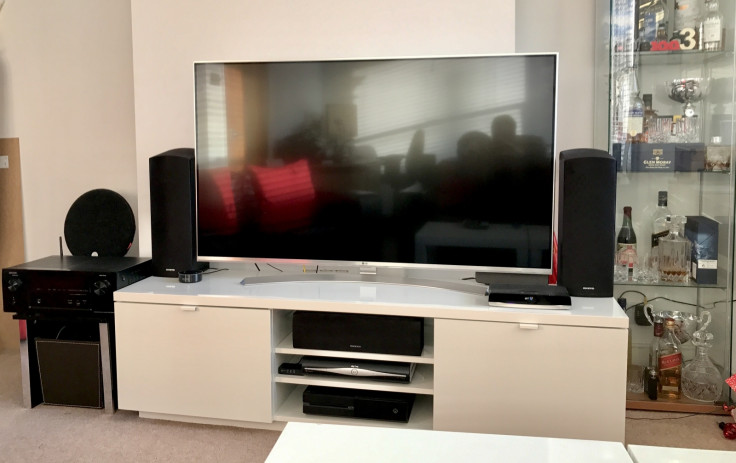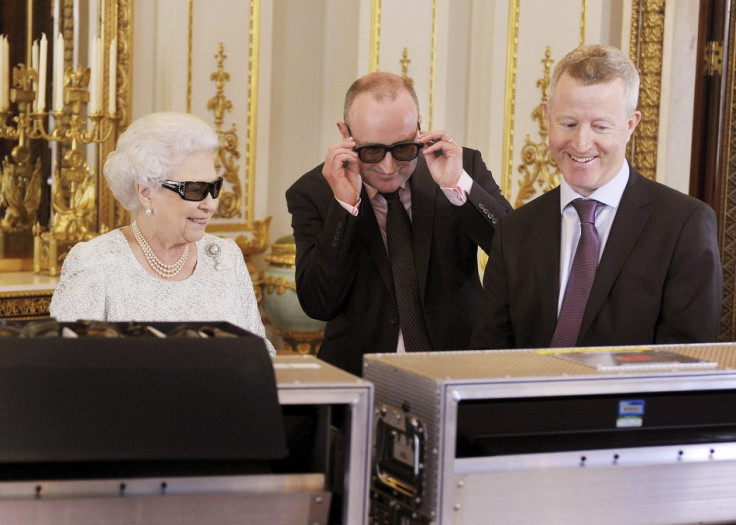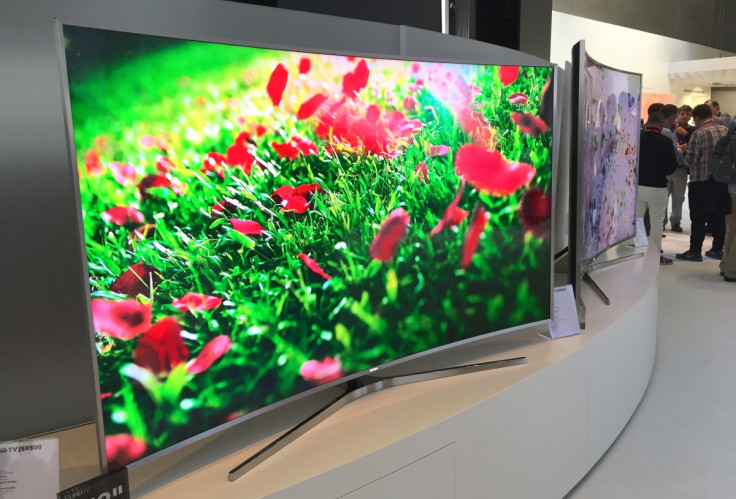Complete TV buying guide: Know your HDR and Ultra HD from your Smart, 3D and more
Everything you need to know about buying a new television.

You might not realise it, but buying a television right now is a bit of a minefield. Not only do you have to pick what size and manufacturer you want, but you have to get to grips with HD, Ultra HD, HDR, 3D, curved screens and what a television being 'Smart' means.
Thankfully, and having just been through all this ourselves ahead of buying a new TV, here is the IBTimes UK guide to buying a new television.
What is Ultra HD?
First up, the biggest buzzword of the moment. Ultra HD, also known as 4K, is the next generation of HD, or High Definition. An Ultra HD television (sometimes shortened to UHD) has four times as many pixels as HD, hence the alternative 4K name.
A year ago Ultra HD was a bit of a mess, with each manufacturer implementing the technology slightly differently and no UK broadcaster actually showing anything in UHD.
But technology moves quickly and now both Sky and BT are broadcasting UHD content on a regular basis. It's only select sports fixtures and some films for now, but progress is being made and now is the time to buy into UHD. Put simply, we recommend readers to invest in an Ultra HD television if they can, because the content is coming, it looks spectacular and the price gap between HD and UHD is falling all the time.
What is HDR?
Standing for High Dynamic Range, HDR is about to become as important as UHD. Televisions with HDR offer a wider range of richer colours, brighter whites and deeper blacks.
New for 2016 is the Ultra HD Premium label, which is used to declare when a television meets certain standards in picture quality (including 4K and true HDR), as determined by the UHD Alliance. Buy a TV with the Ultra HD Premium label and you know you are buying the best. LG's Super UHD range and Samsung's SUHD range are the ones to look out for.
Note we describe this as offering 'true HDR', because some manufacturers and retailers are guilty of slapping 'HDR' on screens which do not meet the Premium standard, but instead have a feature (sometimes even called HDR mode or similar) which uses software to artificially adjust colours. This boosts brightness and saturation, but doesn't look as good as true HDR, which is achieved in part by software but also by using a higher quality display.

The stat to look for here is whether the television has an 8-bit or 10-bit display. The former is what most TVs have had for a good few years and is generally how television is broadcast; it means the screen can produce 256 shades of colour for each of the primary colours (red, green and blue), resulting in 16.8 million colours. This sounds impressive, but our eyes can distinguish between many more and an 8-bit bandwidth limit means these TVs can't display as many colours as we'd like.
A 10-bit screen has more bandwidth and therefore a more detailed colour palette. Here the TV can produce 1,024 shades for each primary colour, which adds up to just over one billion shades. The ability to show all these colours depends on the source material; which cameras are used, how video is recorded, whether it is coming from a UHD Blu-ray or an internet stream, if a compatible HDMI cable is being used etc, but without the 10-bit panel true HDR isn't possible.
The short story is, HDR content is still fairly limited for now and 10-bit screens are more expensive than 8-bit. Buying into HDR isn't as crucial as buying into Ultra HD, but if your budget stretches far enough and future-proofing is your goal, then a 10-bit TV is worthwhile. Just make sure it really is 10-bit, as this stat is often missing from product descriptions.
What is OLED?
Standing for organic light emitting diode, OLED televisions use a different type of screen to all others. This technology produced much darker blacks and brighter, more vivid colours. The results are extraordinary but so too is the price. Prices start at around £1,900 for a 55in screen (which is also Ultra HD and support full HDR), but quickly run up to over £4,000 for a 65in screen and even £20,000 for a massive 77in screen sold by LG. If you want the ultimate television then OLED is the way to go, but for now the technology remains very expensive.
Is 3D still popular?

Samsung dropped 3D compatibility from its televisions for 2016, while LG and some other manufacturers have left the technology in place. That being said, no one is making a song and dance about 3D like they did a few years ago. Consumers didn't show enough interest in watching TV through special glasses, forcing broadcasters like Sky to promptly scrap their 3D channels or move them to online-only.
If you really want 3D then some 2015 Samsung TVs (and high-end LGs from 2016) still support it, but we would instead recommend your focus stays on HDR, screen size and the television's Smart credentials.
What is the best TV screen size?
This one's up to you and how much space you have to fill. To say 'the bigger the better' is generally accurate. An Ultra HD resolution will be less obvious at smaller screen sizes (less than 42in), but your needs here will depend on where the TV is being placed.
The most common size for new TVs sold in the UK is 50in, which might sound massive if you are upgrading from a 32in or 42in, but it's amazing how quickly your eyes get used to it. Also bear in mind how modern TVs have tiny bezels around the edge of the display and are very thin, so will often take up less space (and look less intimidating) than you might think.
Should I buy a flat screen or curved screen TV?
Now here's a contentious topic. Curved televisions burst onto the scene just as Ultra HD was starting to get into its stride 18 months ago. Led by Samsung, they promised an enhanced viewing experience by cutting down on reflections and giving your eye muscles less of a workout. The theory claimed that, because the curve means the edges of the screen are the same distance from your eyes as the middle, you spend less time refocusing and more time enjoying the film.

Even in theory this only works if you sit directly in front of the middle of the screen, and in reality we couldn't find an expert to agree with Samsung's claims. We spoke to several experts, including Moorfields Eye Hospital, but none could give a reason for curved screens being better than flat ones.
And in our own testing we also struggled to see the argument for the curve. They look nice when switched off, in an 'oh, that's interesting' kind of way, but when switched on it's impossible to really see the difference.
What are the best Smart TV features?
Naturally, this article focuses on picture quality. But televisions are becoming smarter than ever and many feature internet connections, apps like Netflix and BBC iPlayer, and ever-expanding operating systems.
While this section could be a feature on its own, we'll just cover the basics here. First, describing a TV as 'smart' generally means it has apps and a web connection, either via Wi-Fi, Ethernet or both. Sony televisions use Android, LG uses webOS and Samsung TV's run on Tizen.
They all look and behave slightly differently, but all offer broadly the same experience. Namely, apps for on-demand content. You will need subscriptions to Netflix and Amazon Prime to use their respective apps, but those from the BBC, ITV, Channel 4 and Five are all free and often already installed on the TV from new.
Other 'smart' features include being able to stream content from a smartphone to the TV, and playing files from a memory stick or external hard drive via a USB port. TVs often also have a web browser, but without a keyboard and mouse this is unlikely to get much use.
TV buying guide 2016: The bottom line
Think about ideal screen size and budget first, then try to get Ultra HD if this is going to be your main television. Consider HDR if you want to future-proof yourself, but remember this (and the 10-bit display) will likely bump up your budget. Curved screens and 3D can be ignored, while smart features are a great convenience if you already use on-demand services but don't have a games console with them already installed.
© Copyright IBTimes 2025. All rights reserved.






















